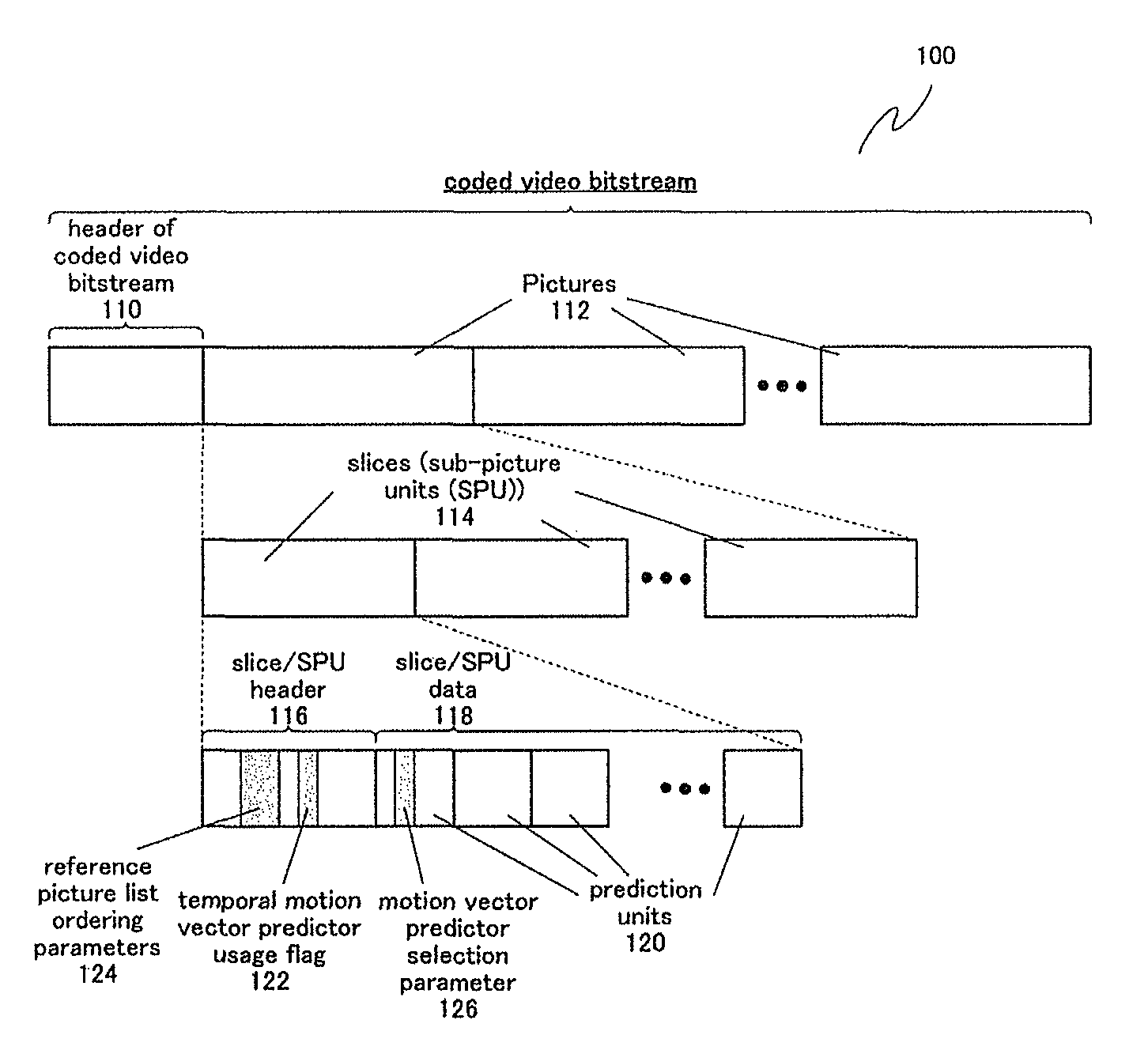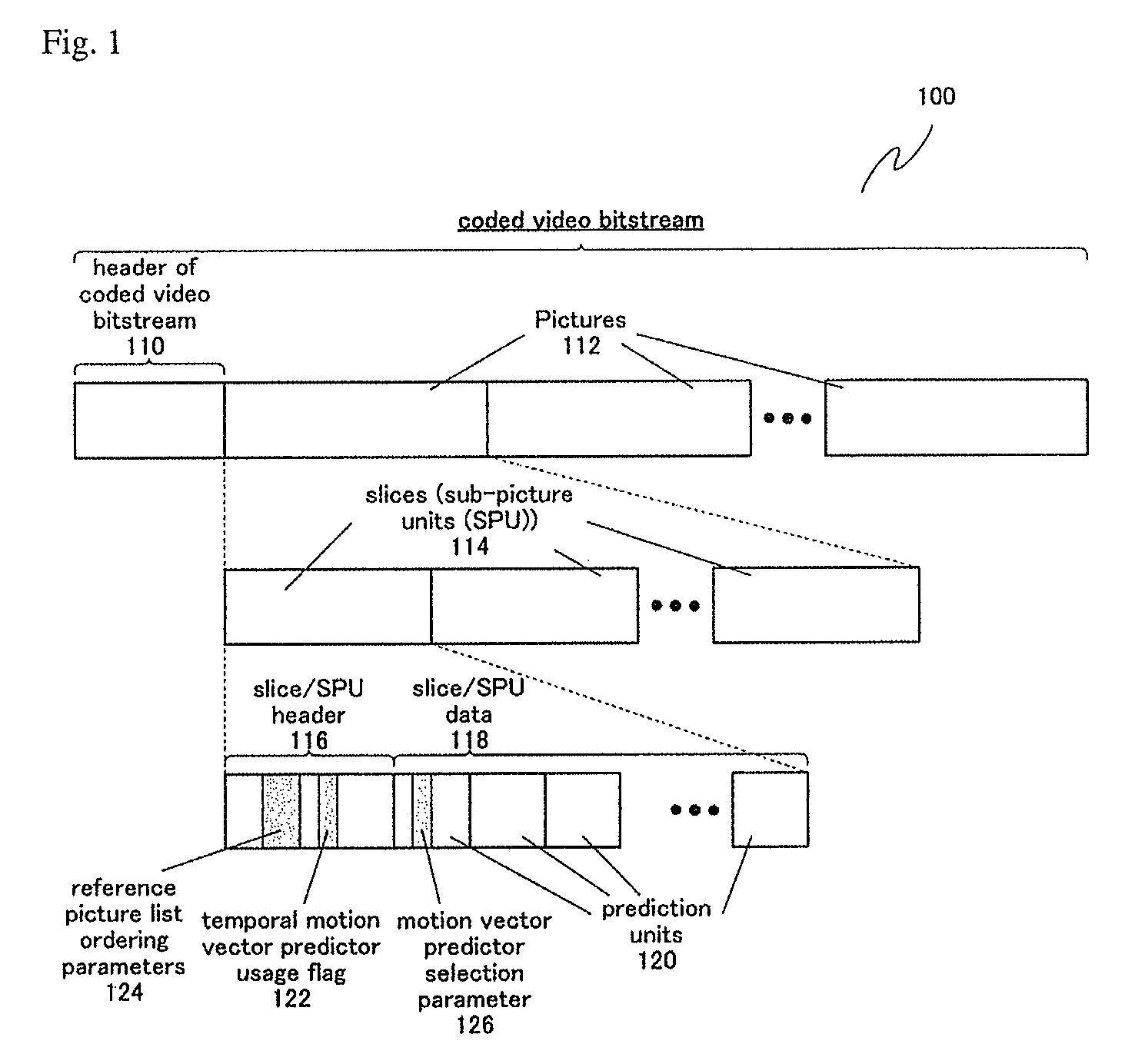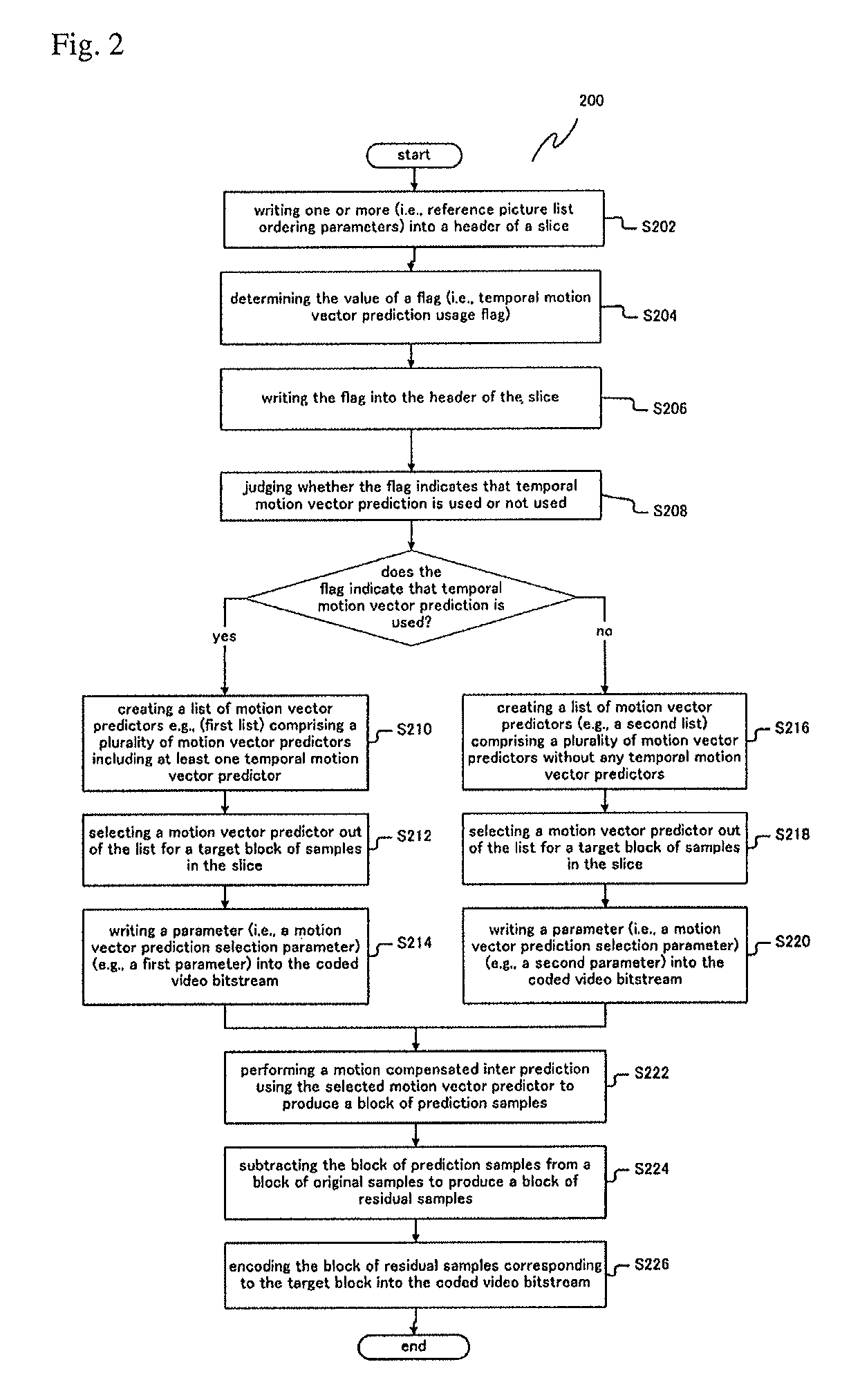Methods and apparatuses for encoding and decoding video using temporal motion vector prediction
a technology of motion vector prediction and video, which is applied in the field of encoding a video and decoding a video using can solve the problem that the temporal motion vector prediction is susceptible to erroneous motion vector prediction, and achieve the effect of improving flexibility and coding efficiency of inter-picture prediction, and improving the error robustness of inter-picture prediction
- Summary
- Abstract
- Description
- Claims
- Application Information
AI Technical Summary
Benefits of technology
Problems solved by technology
Method used
Image
Examples
first embodiment
[0127] the value of the flag 122 is determined based on a temporal layer of the current picture. FIG. 6 depicts a diagram showing the different temporal layers for a group of pictures when the group size / structure is configured to 4 for example. In the example, there are three temporal layers, namely, temporal layer “0”602, temporal layer “1”604 and temporal layer “2”606. Pictures with Picture Order Count (POC) values of 0, 4 and 8 are located in temporal layer “0”602, pictures with POC values of 2 and 6 are located in temporal layer “1”604, and pictures with POC values of 1, 3, 5 and 7 are located in temporal layer “2”606. Temporal layers “0”, “1” and “2” are respectively associated with or represented by temporal ID 0, 1 and 2. Accordingly, pictures in temporal layer “0”602 have associated therewith temporal ID “0”, pictures in temporal layer “1”604 have associated therewith temporal ID 1, and pictures in temporal layer “2”606 have associated therewith temporal ID 2.
[0128]FIG. 7 d...
fourth embodiment
[0133]FIG. 12 depicts a flowchart illustrating a method 1200 of determining the value of the flag 122 according to the In Step S1202, the picture is analysed to determine or obtain a parameter of each slice of the picture which specifies the slices' NAL unit type. Subsequently, in Step S1204, it is determined or judged whether the picture containing the current slice is a RAP picture based on the parameter(s) obtained and whether the current slice belongs to a non-base layer / view of the picture. Whether the picture is a RAP picture 1100 can be determined by analysing the value of the NAL unit type 1008, 1010, 1012 in the header 1004 of each NAL unit or slice 1002 in the picture. As mentioned above, a RAP picture 1100 is a picture which itself and all subsequent pictures in decoding order can be correctly decoded without performing the decoding process of any pictures the precede the RAP picture 1100 in decoding order. For example, HEVC specification specifies a RAP picture as a cod...
embodiment a
[0134](Embodiment A)
[0135]The processing described in each of embodiments can be simply implemented in an independent computer system, by recording, in a recording medium, a program for implementing the configurations of the moving picture coding method (image coding method) and the moving picture decoding method (image decoding method) described in each of embodiments. The recording media may be any recording media as long as the program can be recorded, such as a magnetic disk, an optical disk, a magnetic optical disk, an IC card, and a semiconductor memory.
[0136]Hereinafter, the applications to the moving picture coding method (image coding method) and the moving picture decoding method (image decoding method) described in each of embodiments and systems using thereof will be described. The system has a feature of having an image coding and decoding apparatus that includes an image coding apparatus using the image coding method and an image decoding apparatus using the image deco...
PUM
 Login to View More
Login to View More Abstract
Description
Claims
Application Information
 Login to View More
Login to View More - R&D
- Intellectual Property
- Life Sciences
- Materials
- Tech Scout
- Unparalleled Data Quality
- Higher Quality Content
- 60% Fewer Hallucinations
Browse by: Latest US Patents, China's latest patents, Technical Efficacy Thesaurus, Application Domain, Technology Topic, Popular Technical Reports.
© 2025 PatSnap. All rights reserved.Legal|Privacy policy|Modern Slavery Act Transparency Statement|Sitemap|About US| Contact US: help@patsnap.com



